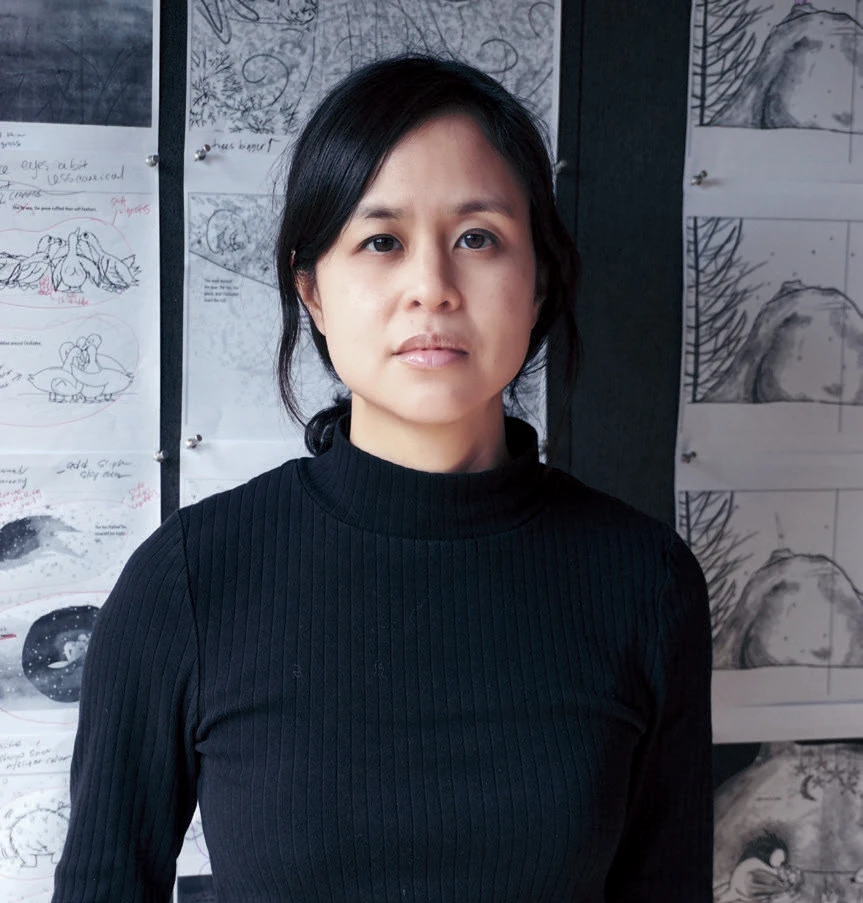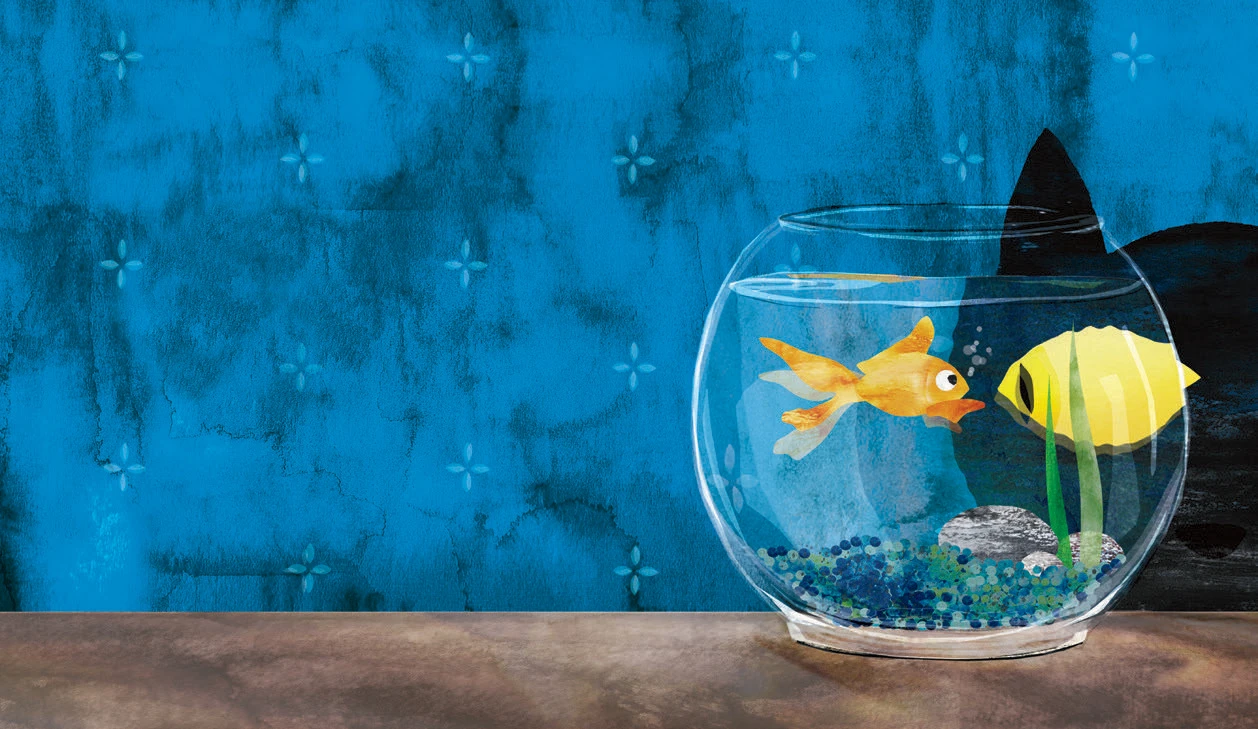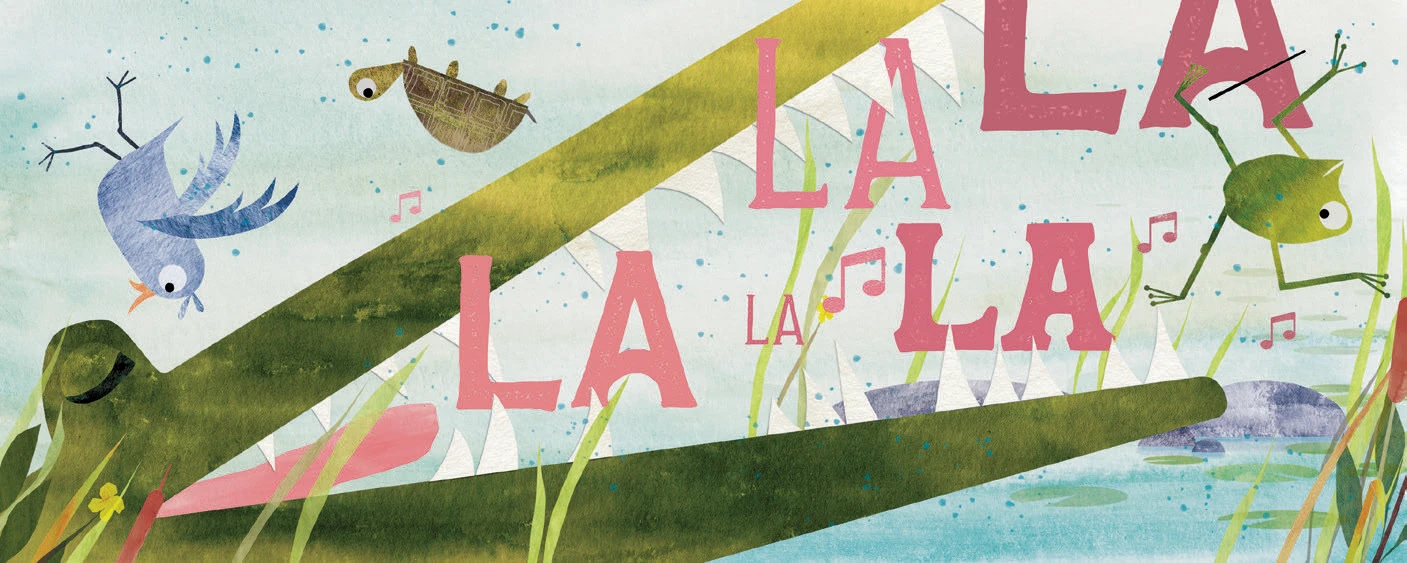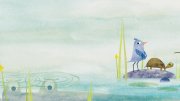Ann Kim Ha, M.Arch. ’08, first started thinking about Walter the crocodile sometime in 2020. COVID-19 had shut down much of the world, and she was at home with her children, who were then two and four. “It was a very intense time,” she says. Work and parenting blended into one endless, undifferentiated swirl—especially for Ha and her husband, Behrang Behin, M.Arch. ’08, who co-own an architectural design studio in New Jersey.

Needing a creative outlet beyond her job, Ha started writing stories—and then began illustrating them. One story was about a shy crocodile named Walter, who became the protagonist of her debut children’s book, Walter Finds His Voice (2023). Sweet but achingly timid, he hides underwater while his friends—a frog, a turtle, and a blue songbird—sing and socialize in the swamp. They want him to join, but he can’t quite do it. Page after page shows Walter’s anxious, longing eyes, floating just above the waterline, with the rest of his body submerged below. What finally pushes him out of his shyness is a friend in distress who needs his help.
Like all her stories (Ha is now working on her third children’s book), this one was inspired by everyday life. “I was just watching my kids play and interact with each other and other kids,” she explains. Her children, like Walter, are introverts. “They feel shy all the time,” she says, “especially around people they don’t know. I wanted to write a story to tell them it’s okay.”
A year after releasing Walter Finds His Voice, Ha published A Friend for Eddy, about a lonely goldfish who finds an unexpected friendship with a cat. Again, her children provided the inspiration. “I’m Vietnamese, and my husband is Iranian,” she says, “so our kids are mixed race. I noticed that at their schools and playgrounds, often the kids tend to gravitate toward other kids of the same cultural background and race. And I started to think, how do my kids fit into this picture?” Eddy’s story became a way of imagining an answer.
These characters and stories came naturally to Ha. What felt less intuitive, despite her experience with architectural drawings, were the books’ illustrations. “I’m used to drawing very orthogonal buildings, with maybe a curve or an angle in there somewhere,” she says. “With children’s illustrations, it’s talking animals and animals with expressive faces.” After a lot of practice, Ha found her way to a collage style that’s painstaking but more “forgiving” than other methods, and also more familiar. “It’s something I used to do in architecture school,” she says. She begins each illustration by painting a series of color palettes in watercolor—varying textures of blue, green, red, yellow, and orange. Then she uploads those palettes to her computer and digitally cuts out the shapes she’ll use to assemble the characters and objects in the scene. Then, bit by bit, she puts it all together.

The resulting images are deceptively simple and strikingly poignant. Both the subdued earth tones of Walter and the bold, assertive colors of Eddy are full of richness; the illustrations can look almost like a work of stop-motion animation—which is how Ha sees the narratives unfolding in her imagination.
This method of working is reminiscent of one of her earliest artistic impulses as a child. Ha is the daughter of Vietnamese refugees who arrived first in New Orleans, where she was born, before moving to Florida when she was five. She grew up mostly in Tampa; her mother worked there as a bank teller and her father became an accountant. From a young age, Ha was visually curious and creative. “We didn’t have a lot of art supplies growing up,” she says. “I would just make do with whatever we had.” Sometimes she’d use a hole punch to make piles of little round dots from colored construction paper, which she’d then assemble into a kind of collaged picture with glue, reminiscent of a pointillist painting.
That affinity for imagery and for building things led her to study architecture in college at the University of Florida and then at the Harvard Graduate School of Design. The firm she and her husband run, Behin Ha Design Studio, specializes in designing public art installations. In a Manhattan park, the couple built “Be Heard,” a large megaphone constructed from plywood used to board up buildings during the city’s Black Lives Matter protests in 2020. At several locations in China, Denmark, and the United States, they’ve built temporary sculptures using long strips of orange mesh fabric bolted to the ground and stretching upward two or three stories in a funnel shape, creating an illusion of a solid structure. One of the firm’s earliest projects was a “living pavilion” on Governors Island in New York City. It’s a covered walkway, shaped almost like a saddle or an overturned ship’s hull. The piece incorporates white plastic milk crates, which support an overhead carpet of living grasses in the walkway’s interior. The project was meant to showcase the island’s eco-friendly transformation.

Each of these works is a way of telling stories, Ha says, but there’s an untethered freedom in her children’s books: no zoning rules, no site constraints, no budget limitations beyond her own time and creativity. Right now, she’s working on a new book about a rabbit and a broccoli plant locked in a complicated relationship: the rabbit—gracious, submissive—has been caring for the broccoli since it was a seedling, and yet the broccoli is aggressive and demanding, even mean. “I’m not sure where the idea came from, except that we’re big broccoli eaters in this family,” Ha says, but the story’s central theme is something she thinks about a lot. “This is going to be a book all about intentions.”









